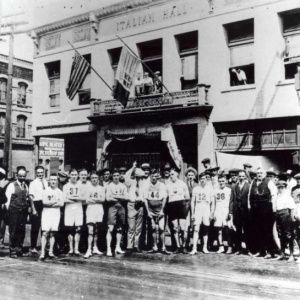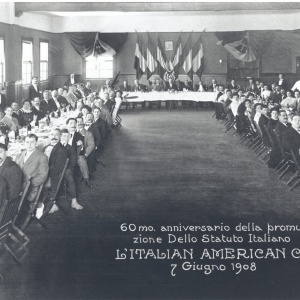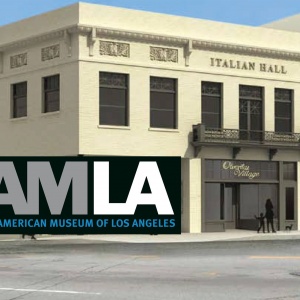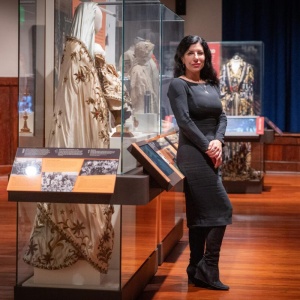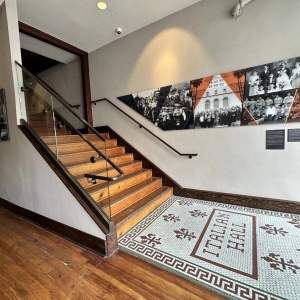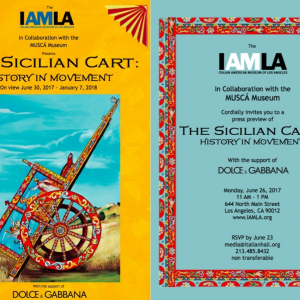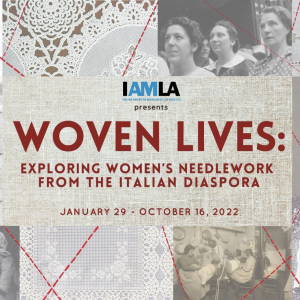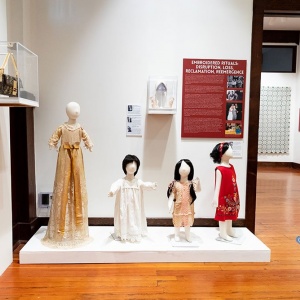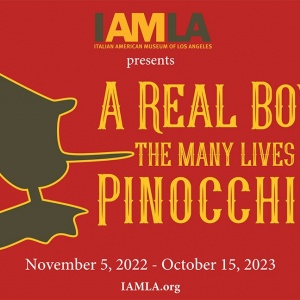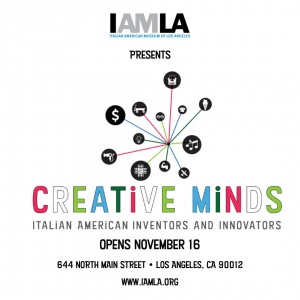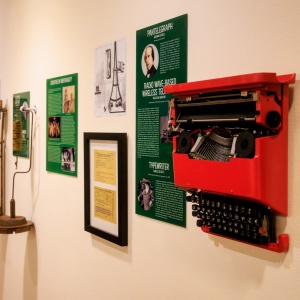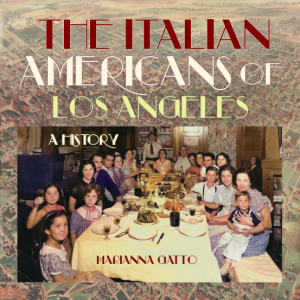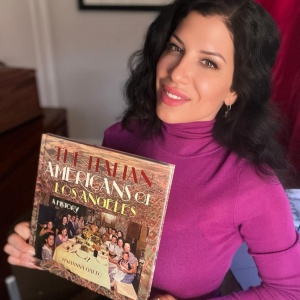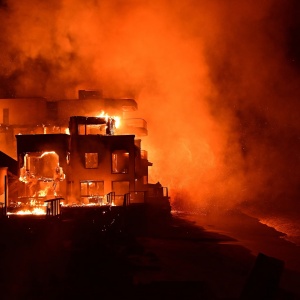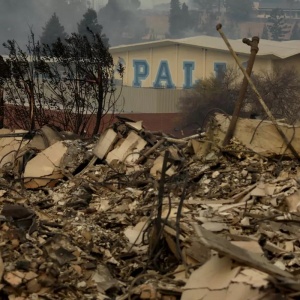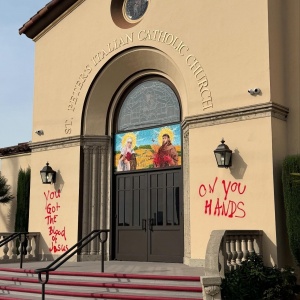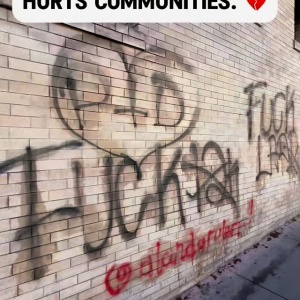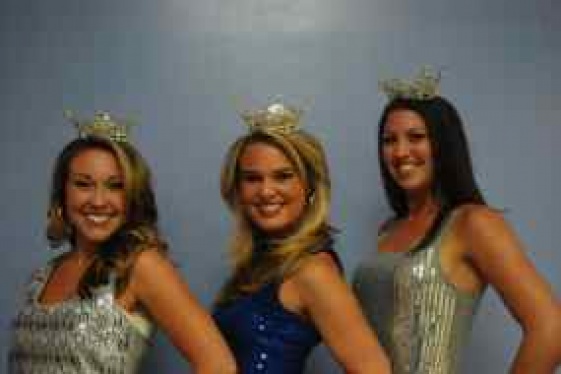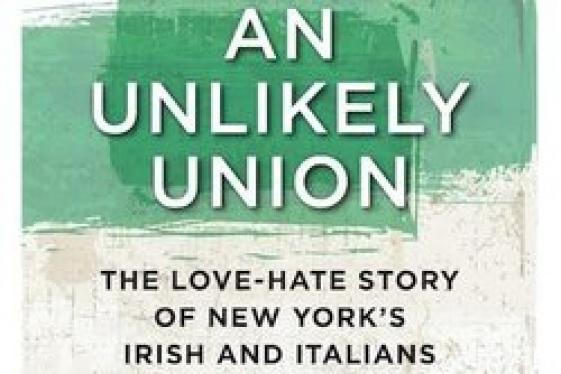
Marianna Gatto (Executive Director and co-founder of the Italian American Museum of Los Angeles)
L'Italia a Los Angeles; bentornata su We the Italians a Marianna Gatto

The interview you're about to read is particularly dear to me, both for the subject it addresses and for the person who represents it. The history of Italians in Los Angeles has always fascinated me because it is somehow different from that of those who emigrated from Italy and settled on the East Coast of the United States. There are certainly similarities, but it’s the differences that catch my curiosity.
In addition, there is someone for me who perfectly embodies the beauty of the Italian American community in Los Angeles. A friend I've known for a long time, an Italian American woman very proud of her roots, an entrepreneur but also an educator, a writer, a tireless event organizer, and a wonderful person. Her name is Marianna Gatto, I adore her, and I’m happy to share her words to our readers.
Good morning Marianna, welcome back to We the Italians. Let’s begin with telling us, please, your family's Italian origins and your experience on how was growing up as an Italian American in Los Angeles
Buongiorno, Umberto! It’s so nice to be back. I’d like to start by thanking you and We the Italians for your support. Can you believe that it’s been over a decade since we did our first interview?
Like most Italian Americans, my family hails from small villages in Italy’s South, specifically Lago (Cosenza) in Calabria, and Lucca Sicula (Agrigento), Sicily. This past year, I made an exciting research discovery when I located my great-grandmother’s birth record; she was born in 1864 in Burgio, a village neighboring to Lucca Sicula that is famous for its ceramics and bronze bells.
My Sicilian family arrived in the United States in 1897 during the Great Arrival, entering through the Port of Louisiana. They were among those lured to the Southern United States to fill the labor shortage that ensued following the Civil War. My Sicilian great-grandfather, Giuseppe Cortese, and his 14 year-old son worked as agricultural laborers in the New Orleans area before sending for the rest of the family in Sicily and continuing west to Pueblo, Colorado, then known as “the Pittsburgh of the West,” where the steel industry beckoned. It was there that my grandmother and namesake, Maria Antonia Cortese, was born in 1901.
Meanwhile, on the Calabrese side, my nonnu Mercurio “Fred” Gatto entered the US by way of Canada in 1919. He worked in coal camps and later, at an aluminum plant in Pittsburgh. Nonnu Mercurio moved to Pueblo, Colorado, where he met my grandmother. In 1948, the Gatto family, which then included my dad and his two brothers, moved to Los Angeles, initially settling in one of LA’s largest Italian neighborhoods, Lincoln Heights.
I was born in Los Angeles, and by the time I entered elementary school I was already curious about my heritage. One of the earliest memories I associate with my italianità—and therefore with being a part of something distinct—was attending a St. Joseph’s Table at the age of six. I lost my grandparents when I was young, and it was my father who imparted a love for our Italian roots, though I owe a debt of gratitude to my other ancestor guides.
Growing up, I questioned what my place was as an Italian American in Los Angeles. I also struggled to decipher how I fit into Italian America as a Los Angeles native. In my Catholic elementary school class of 31 students there were 23 different nationalities represented and I was the only Italian American. As I reached my college years, my interest in Italian American history and culture intensified, but there were few Italian American reference points and resources. Italian Americans were absent from local histories and you seldom found mentions of Los Angeles in Italian American histories. It was like a Rubik’s Cube, a puzzle that caused great consternation.
As an undergraduate, I learned about the Italian Hall, a historic building on the edge of downtown that had been a gathering place for the Italians of Los Angeles in the early 1900s. An effort was underway to restore the dilapidated century-old building. When I first visited Italian Hall, there were pigeons flying around inside and dust and dirt an inch thick, but I was floored. The building demonstrated that Italians did indeed have a place in Los Angeles. I said to myself, “This needs to be a museum and I want to be the director!” I had no idea what I was saying, but that moment served as a driving force for my research as well as my vocation, and two careers later, in 2010, I became the museum’s first director.
Please tell us more about the Italian American Museum of Los Angeles (IAMLA)
The IAMLA is a museum that explores Italian American history and culture. It features an award-winning permanent exhibition, which is also accessible online. The IAMLA also presents new and original temporary exhibitions that are history, arts, and culture in focus every year. Past exhibitions have included The Sicilian Cart: History in Movement, presented in conjunction with the Musca Museum of Sicily and Dolce & Gabbana, and Woven Lives: Exploring Women's Needlework from the Italian Diaspora, which won the Award of Excellence from the American Association for State and Local History. A Real Boy: The Many Lives of Pinocchio, explores Pinocchio as one of the world’s most recognizable icons and attracted a record number of visitors. Our current temporary exhibition, Creative Minds, examines Italian American inventors and innovators and their creations, from the nuclear reactor and the microchip to the Big Mac and the Radio Flyer wagon. The IAMLA also offers curricula, docent-led tours, and a variety of programming for all ages as well as internships. Admission is free as are most programs.
We present programs for children, adults, and everyone in between, from interactive bilingual plays for children, to lectures, film screenings, workshops, and concerts. One of the ways in which we differ from other Italian American institutions is that a very small percentage of our visitors are of Italian extraction. Our next temporary exhibition, Mangia! The Evolution of Italian Food in the US, will explore the process through which Italian food, once a cuisine consumed almost exclusively by a marginalized group of immigrants, became one of the nation’s most popular foods.
This year, 2025, is my twentieth year working on the museum project and my fifteenth year as the IAMLA’s director. There have been many adventures, highs, and lows. I am incredibly grateful to my colleague, Francesca Guerrini, who has been an essential part of the museum for over a decade. I am further grateful for the many great collaborators and supporters that the IAMLA has nationwide and in Italy.
You recently published the book “The Italian Americans of Los Angeles: A History”. I definitely recommend our readers to buy it: can you give us some previews of its contents?
Italians began settling in Los Angeles 200 years ago—before there was a California and before there was an Italy! In writing this book, I hoped to document a community that has shaped the region in immeasurable ways yet has been largely overlooked.
As a native Italo Angelena, this autohistory is also deeply personal. The book is the first extended account of Italian Americans in the City of Angels. Within its pages you will discover the pioneers who first settled in the region, as well as the artists and agriculturalists, dreamers and outlaws, pioneers and power brokers who helped make Los Angeles and who impacted the nation and even the globe. Italian American experiences in Los Angeles share some similarities with Italian American communities elsewhere in the nation, but there are also many unique experiences, illustrating the tremendous diversity within the Italian diaspora.
The Italian Americans of Los Angeles examines topics such as foodways, faith, and the vibrant Italian enclaves or “Little Italies” that once existed in the city. It chronicles the Italian immigrants who helped give birth to the state’s wine industry, which began in Los Angeles, and the contributions Italian Americans have made to the entertainment industry as well as the role of the entertainment industry in shaping perspectives of Italian Americans. It also delves into the history of anti-Italianism in the US and how these attitudes influenced the treatment of Italian Americans during World War II.
The Italian Americans on the West Coast were most impacted by the wartime restrictions and civil liberties violations. The book features over one hundred images and is very accessible to all types of readers. You can find The Italian Americans of Los Angeles on the big online retailers as well as independent sellers, such as our beloved IAM Books in Boston. You can also order signed copies on my website.
Recently we all know that Los Angeles was hit by a devastating series of fires that destroyed parts of the city. In particular, one of the hardest hit areas was Pacific Palisades: is it true that it was an area where many Italian Americans lived?
Many Italian Americans lived in the Palisades and the neighboring communities impacted by the fires, while others lived in Altadena and the areas devastated by the Eaton fire. The Palisades fire burned 23,000 acres; the Eaton fire burned 14,000 acres—that’s the size of Manhattan, to give you an idea. The destruction is reminiscent of a war-ravaged nation. In the Italian American community of Los Angeles, there are many losses. Within the IAMLA itself, one of our board members lost her home and another lost her family business. This will impact our region for decades to come.
How can We the Italians and its community support the IAMLA?
First, we appreciate the many years of collaboration with We the Italians and how you have helped raise awareness about the IAMLA and our initiatives. It’s through partnerships that the IAMLA expands its reach and maximizes its resources and impact. Over the past fifteen years, the IAMLA has worked with many Italian companies and foundations to produce exhibitions, programs, and events. The museum has served as a vehicle for the promotion of Made in Italy. We welcome your readers to reach out with ideas and proposals for collaboration.
Recently both St. Peter's Italian Church in Los Angeles and the Italian American Museum of Los Angeles were vandalized. What is going on?
In recent years, St. Peter’s Italian Church, which was founded over a century ago and provides aid to some of the most vulnerable residents of Los Angeles, has been the victim of costly acts of vandalism. Some of the messages scrawled on the church expressed anti-colonial sentiments and coincided with Columbus Day, while the most recent graffiti was anti-Italian. Unfortunately, Los Angeles has suffered, and continues to suffer, as a result of misguided policies that have transformed our streets (and those of other large cities) into theaters of human misery. To understand the complexity of this issue would require a much longer conversation about homelessness, mental health, addiction, among other topics.
The vandalism that took place at the IAMLA was unrelated to the incidents at St. Peter’s. It occurred during protests against President Trump’s immigration policies. The museum was not targeted. The sad irony of being vandalized as a museum about immigrants, one that is led by immigrants and the children of immigrants, a museum that serves a largely immigrant population caught the attention of the media. My hope was that it would be a teaching moment.
How is the situation in Los Angeles with the attacks on Columbus? Are there any statues left? Have the city, county and state there also cancelled their celebrations dedicated to the great Italian explorer?
The Los Angeles City Council voted to eliminate Columbus Day in 2017 and the Columbus statue was removed from public property the following year. Regardless of whether Columbus Day is recognized as a holiday, the IAMLA’s mission of promoting and preserving Italian American history and culture continues. It’s my hope that Italian Americans—or anyone who recognizes the value in our history and heritage—support Italian American museums, cultural centers, churches, and artists as well as Italian language and studies programs, professors and scholars, and the elected representatives who advocate on our behalf. Get involved somehow, contribute, organize. We are resilient people, lest we forget.
You may be interested
-
'Phantom Limb': A Conversation With Dennis...
Dennis Palumbo is a thriller writer and psychotherapist in private practice. He's the auth...
-
“The Art of Bulgari: La Dolce Vita & Beyond,...
by Matthew Breen Fashion fans will be in for a treat this fall when the Fine Arts Museums...
-
“The Hill” St. Louis’ Little Italy
When the fire hydrants begin to look like Italian flags with green, red and white stripes,...
-
13th Annual Galbani Italian Feast of San Gen...
In September of 2002, some of Los Angeles' most prominent Italian American citizens got to...
-
1st Annual Little Italy Cannoli Tournament
Little Italy San Jose will be hosting a single elimination Cannoli tournament to coincide...
-
A wreath for Columbus and three crowns for t...
The Columbus Day Committee of Atlantic City along with the Bonnie Blue Foundation annually...
-
An Unlikely Union: The love-hate story of Ne...
Award-winning author and Brooklynite Paul Moses is back with a historic yet dazzling sto...
-
Candice Guardino Brings GILDA AND MARGARETTE...
Candice Guardino is adding to her list of successful theatrical productions with the debut...





